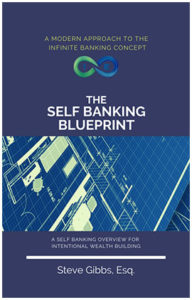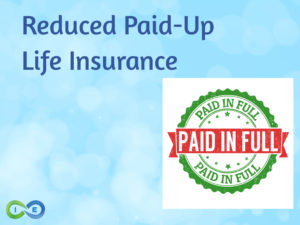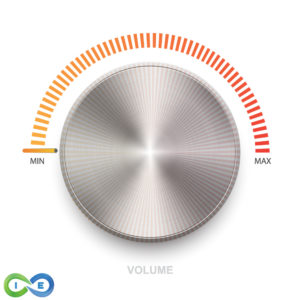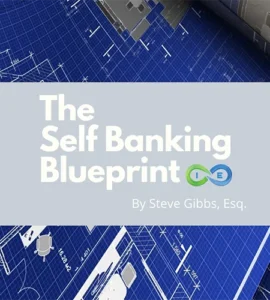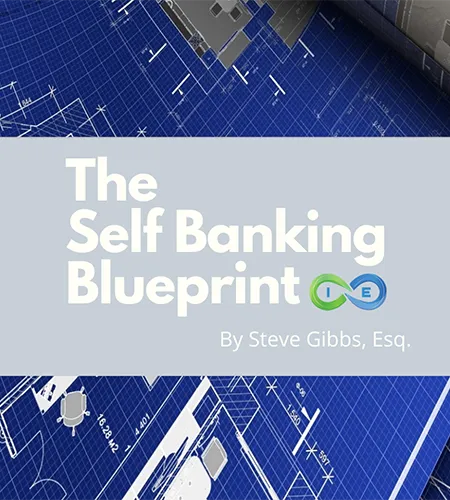📖 Estimated Reading Time: 16 minutes
Important Disclosure
This content is for educational purposes only and does not constitute personalized financial, investment, tax, or legal advice. Past performance does not guarantee future results. Life insurance policies involve fees, charges, and potential tax consequences. Dividend rates and returns are not guaranteed and may vary. Policy loans reduce death benefits and cash values if not repaid. Individual results will vary based on personal circumstances, market conditions, and policy performance. Case studies are hypothetical examples based on research assumptions. The authors are licensed insurance professionals and may receive compensation from insurance product sales. Consult qualified financial, tax, and legal professionals before making investment decisions.
TL;DR: Should You Replace Bonds with Whole Life Insurance?
Based on three independent academic studies, properly structured whole life insurance can serve as a worthier bond alternative for many investors:
✓ Research Evidence:
- Ernst & Young: 20% better retirement income
- Wade Pfau: Superior “buffer asset” during downturns
- Current opportunity: 4-5% vs. previous 2-3% environment
✓ Key Advantages:
- Guaranteed annual cash value increases
- Tax-deferred growth, tax-free loans
- Positive correlation with rising rates
- Complete liquidity without selling
Best suited for: Investors seeking bond-like safety with better liquidity, tax advantages, and sequence-of-returns protection.
Table of Contents
- Why This Matters Now More Than Ever
- Vanguard’s 70% Bond Recommendation: A Closer Look
- The Bond Problem Nobody Talks About
- The Research Revolution: Three Studies That Change Everything
- The Whole Life Advantage: Your Personal “Actuarial Bond”
- Real-World Implementation: Making the Switch
- Case Studies: Real Results vs Traditional Portfolios
- Addressing Common Concerns
- The Bottom Line
- Frequently Asked Questions
Why This Matters Now More Than Ever
In August 2025, something unprecedented happened in the financial world. Vanguard, the champion of low-cost investing, recommended a 70% bond allocation for the next decade—a dramatic shift that caught many investors off guard.
But here’s what Vanguard didn’t tell you: Three independent academic studies have proven there’s a mathematically superior alternative that most financial advisors completely overlook.
While Wall Street doubles down on traditional bonds at potentially the worst possible time, a growing body of research from Ernst & Young, Princeton University, and leading retirement income specialists shows that properly structured whole life insurance consistently outperforms bonds in the metrics that matter most to real investors.
This strategy is about upgrading to a more sophisticated approach that provides better outcomes with less risk. The research is clear, the timing is perfect, and the opportunity is massive.
Key Research Finding
Ernst & Young’s comprehensive analysis found that a 25-year-old couple using a 50% permanent life insurance plus investments strategy would realize a 20% gain in retirement income compared to investment-only strategies. Additionally, academic research by Wade Pfau demonstrates how whole life cash value can serve as a superior “buffer asset” during market downturns.
Vanguard’s 70% Bond Recommendation: A Closer Look
Vanguard’s recent recommendation isn’t inherently wrong—it’s based on decades of solid research and their genuine belief that bonds will outperform in the coming decade. Their logic is defensible: after the worst bond performance in generations, they’re betting on mean reversion.
But here’s what’s concerning about this timing:
- We’re coming off the greatest bond bull market in history (1981-2022)
- Interest rates remain historically low despite recent increases
- Rising rate environments historically crush bond returns
- Sequence of returns risk is highest early in retirement
Vanguard’s recommendation essentially asks you to bet that the next decade will look like the last four decades—but what if it looks more like the 1940s-1980s period when bonds delivered middling returns with high volatility?
The Bond Problem Nobody Talks About
To understand why whole life insurance is superior to bonds, we need to understand what’s fundamentally changing in the bond market. The environment that created the traditional 60/40 portfolio is ending.
The End of the Bond Bull Market
According to research, we just witnessed the biggest bond bull market in history. From 1981 to 2022, falling interest rates created the perfect environment where bonds could do no wrong.
But here’s the problem: During rising rate periods (like 1940-1980), bonds become more volatile than stocks. You lose money in bonds about one out of every three years—that’s more volatile than the equity market.
| Period | Interest Rate Environment | Bond Performance | Volatility Level |
|---|---|---|---|
| 1940-1980 | Rising Rates | Middling Returns | High Volatility |
| 1981-2022 | Falling Rates | Excellent Returns | Low Volatility |
| 2023-Present | Rising/Uncertain | Poor Performance | Increasing Volatility |
The Mathematical Reality
Bonds make money in exactly two ways:
- Interest payments (the coupon)
- Capital appreciation (when rates fall)
When interest rates rise, you lose the second component entirely. Nobody wants the bond you bought at low rates when they can get higher rates elsewhere. This is exactly what happened in 2022 when bonds had their worst year in decades.
Research Finding
Historical analysis shows that during the 1981-2022 period, whole life insurance averaged 6%+ returns with essentially zero volatility, while bonds experienced significant volatility and much lower risk-adjusted returns.
The Research Revolution: Three Studies That Change Everything
While most financial advisors still reflexively recommend bonds for the “safe” portion of portfolios, academic research has quietly been proving them wrong. Three independent studies have reached the same conclusion: integrating whole life insurance creates beneficial outcomes.
Study #1: Ernst & Young’s Comprehensive Analysis
The Finding: For a 25-year-old couple making $80,000 annually, a 50% permanent life insurance plus investments strategy delivered a 20% gain in retirement income compared to investment-only approaches. Source.
The Methodology: Monte Carlo analysis across 1,000 scenarios, examining both retirement income sustainability (90% probability of success) and legacy value outcomes.
Why This Matters: Ernst & Young operates as an independent Big Four accounting firm with zero financial incentive to promote insurance products over investments. They don’t sell insurance, don’t receive commissions, and have no business relationship with insurance companies. This study represents pure mathematical optimization by financial engineers whose only goal was identifying the most efficient retirement income strategies. Their methodology involved Monte Carlo analysis across 1,000 market scenarios, stress-testing both investment-only and insurance-integrated approaches across multiple economic environments.
Key Recommendation: “Allocating up to 30% of annual savings to PLI (permanent life insurance) and up to 30% of wealth at age 55 to deferred income annuities may be appropriate when optimizing retirement income and legacy value outcomes.”
Study #2: Wade Pfau’s Buffer Asset Research
The Finding: Whole life insurance cash value functions as a superior “buffer asset” during market downturns, allowing retirees to avoid portfolio withdrawals when markets are depressed. Source.
The Concept: By using whole life policy loans or withdrawals during bear markets, retirees can let their investment portfolios recover instead of selling at losses—dramatically improving long-term outcomes.
Real-World Example: Dr. Pfau’s research shows that a couple who skipped portfolio withdrawals in just three down years (1970, 1974, 1975) ended their 34-year retirement with $2.26 million instead of $0.
The Mechanism in Practice: The buffer asset strategy works by using policy loans or withdrawals during market downturns, allowing investment portfolios to remain intact during recovery periods. This approach addresses sequence of returns risk – the danger of poor market performance early in retirement when portfolio balances are highest.
The Academic Validation: This research comes from a Princeton-educated professor who is widely recognized as one of the leading retirement income researchers in the world.
Study #3: The Pfau-Kitces Glidepath Revolution
The Finding: Rising equity glidepaths (starting conservative, ending aggressive) are mathematically better to traditional declining glidepaths. Source.
Why This Matters for Insurance: Rising glidepaths work synergistically with insurance foundations. You need guaranteed components to make higher equity exposure psychologically sustainable later in retirement.
The Implication: This research destroys the intellectual foundation of “buy term and invest the difference” by proving that traditional declining glidepaths are suboptimal.
Combined Research Impact
Multiple independent academic sources using rigorous methodology have reached the same conclusion: traditional bond-heavy asset allocation can be improved through insurance integration. This research provides mathematical evidence supporting what wealthy families have practiced for generations.
Methodology Note: Ernst & Young used peer-reviewed Monte Carlo analysis across 1,000 scenarios. Wade Pfau’s research appears in the Journal of Financial Planning and is replicated across multiple academic institutions. The studies use different methodologies, time periods, and assumption sets, yet reach consistent conclusions about insurance integration benefits.
The Whole Life Advantage: Your Personal “Actuarial Bond”
Think of whole life insurance as an “actuarial bond”—a financial instrument that behaves like a better version of traditional bonds. Here’s why this comparison is so powerful:
How Whole Life Functions as a Bond Alternative
| Feature | Traditional Bonds | Whole Life Insurance |
|---|---|---|
| Interest Rate Risk | Inverse relationship (rates up = value down) | Positive correlation (rates up = dividends up) |
| Guaranteed Growth | No guarantees (can lose principal) | Cash value must increase every year |
| Liquidity Access | Must sell (potentially at loss) | Policy loans (no forced selling) |
| Tax Treatment | Interest taxed annually | Growth tax-deferred, loans tax-free |
| Death Benefit | None | Permanent protection |
| Volatility | Can be high in rising rate environments | Essentially zero (guaranteed increases) |
The Magic of Mutual Insurance Companies
Here’s what most people don’t understand: Major mutual life insurance companies operate like giant bond ladders. They buy long-term corporate bonds, hold them to maturity, and pass the cash flow through to policyholders as dividends.
The key difference: Insurance companies don’t care about mark-to-market fluctuations. They’re buying bonds for 10-20 year durations and holding to maturity. Interest rate variations don’t affect their operations the way they devastate bond portfolios.
The Northwestern Mutual Proof
Northwestern Mutual publishes dividend interest rates back to the 1800s. Over that entire period, there’s a positive correlation between interest rates and whole life insurance dividends. When rates rise, dividends rise. This is the opposite of what happens to bond prices.
The Current Whole Life Opportunity
Here’s the perfect storm creating unprecedented opportunity:
- Insurance companies are investing new dollars at double the yields they could access just a few years ago
- Major mutuals are raising dividend rates 20-30 basis points annually. These dividend increases reflect insurance companies investing new premiums at hihger yields creating a generational opportunity for new policyholders.
- The Moody’s corporate bond average (what insurers buy) is at multi-year highs
- Traditional bonds face their worst structural environment in 40+ years
Real-World Implementation: Making the Switch
Understanding the research is one thing. Implementing it properly is another. Here’s how sophisticated investors are making this transition:
The Gradual Replacement Strategy
Don’t abandon your entire portfolio overnight. Instead, think of this as upgrading your financial foundation:
- Assess your current bond allocation (typically 40-60% for pre-retirees)
- Design a properly structured whole life policy to replace 50-75% of that allocation
- Maintain equity exposure for growth (potentially even increase it)
- Use policy loans strategically for opportunities without disrupting growth
The Premium Investment Approach
Think of premiums as bond purchases, not expenses. Just like you’d invest $50,000 annually in bonds, you’re investing $50,000 annually in a bond alternative that:
- Guarantees principal protection
- Provides competitive returns (often 4-6% long-term)
- Offers complete liquidity through policy loans
- Includes substantial death benefit protection
- Grows tax-deferred with tax-free access
Policy Design Note: Proper policy structure focuses on maximizing cash value through Paid-Up Addition (PUA) riders rather than death benefit optimization. Well-designed policies should have 60-80% of premium flowing to PUAs, creating internal rates of return that are higher than traditional whole life designs, allowing you to implement a sophisticated financial instrument that uses insurance mechanics.
The Personal Banking System
Perhaps the most powerful advantage: properly structured whole life insurance becomes your personal banking system. Instead of paying interest to banks, you become the bank for your own financing needs.
How this works:
- Your cash value grows at guaranteed rates plus dividends
- You borrow against your policy for major purchases
- You repay yourself instead of a bank (capturing the interest spread)
- Your cash value continues growing even on borrowed amounts
Policy Loan Mechanics: Loans typically carry 5-8% interest rates. Unlike withdrawals, loans are not taxable events and don’t reduce your cash value growth. The loaned amount continues earning dividends while you pay interest only to yourself. Repayment is flexible with no credit checks or mandatory schedules.
Tax implications: Loans remain tax-free as long as the policy stays in force, making this favorable to 401(k) loans or HELOC access.
Real Implementation Example
Client Profile: 45-year-old professional, $200K income, currently 60/40 portfolio
Traditional Approach: $600K bonds, $900K stocks in 401(k) and taxable accounts
Optimized Approach: Gradually transfer bond holding into $600K whole life policy, $0 bonds, $900k stocks
Result: Same risk profile, better liquidity, tax advantages, death benefit protection, and higher expected returns based on EY research.
Case Studies: Real Results vs Traditional Portfolios
Important Note: These case studies are hypothetical examples based on Ernst & Young research methodology. Individual results will vary significantly based on personal circumstances, market conditions, and policy performance. Past performance does not guarantee future results. Consult qualified professionals before making investment decisions.
Case Study 1: The Pre-Retiree Couple
Profile: Mid-50s couple approaching retirement
Goal: Sustainable retirement income in 10 years
Assets: Substantial 401(k) and IRA balances
Combined Income: Upper-middle-class household income
Traditional Approach:
Conventional 60/40 allocation with standard withdrawal rate assumptions
Projected outcome: Traditional retirement income based on historical portfolio performance
Actuarial Bond Strategy:
Systematic whole life premiums replacing bond allocation, maintaining equity exposure
Outcome: Research framework suggests meaningful improvement potential, though individual outcomes depend on specific allocation percentages, time horizons, and implementation details consistent with the Ernst & Young methodology.
Additional benefits: Substantial death benefit protection, tax-free policy loans for sequence-of-returns protection, guaranteed growth component immune to market volatility
Case Study 2: The High-Income Professional
Profile: High-earning professional in prime earning years
Challenge: Maximizing after-tax wealth accumulation beyond qualified plan limits
Traditional Approach:
Maximize qualified plan contributions, invest surplus in taxable accounts
Challenge: Significant tax drag on bond interest and dividend income
Whole Life Integration:
Substantial annual premiums creating meaningful cash value accumulation
Tax advantage: Tax-deferred growth, tax-free loan access, stepped-up basis at death
Long-term outcome: Tax-equivalent returns potentially comparable to higher-yielding taxable investments while maintaining complete liquidity and substantial death benefit protection
Addressing Common Concerns
“Isn’t Life Insurance Expensive?”
This is the wrong question. The right question is: “What am I getting for my premium dollars?”
When properly structured, whole life insurance isn’t an expense—it’s an asset purchase that provides:
-
- Guaranteed principal protection
- Competitive long-term returns
- Complete liquidity
- Substantial death benefit
- Tax advantages
Compare this to bonds: You pay $100K for a bond, you get interest payments and eventual principal return (if held to maturity). You pay $100K in whole life premiums, you get all the above benefits plus permanent death benefit protection worth multiples of your premium.
“What About Investment Returns?”
The research is clear: It’s not about beating the stock market. It’s about creating better risk-adjusted returns for the portion of your portfolio that needs to be safe.
Whole life insurance typically returns 4-6% long-term. That’s not competing with stocks—it’s competing with bonds. And when you factor in the tax advantages, liquidity, and guarantees, the real return is often equivalent to 6-8% in a taxable account.
“I Can Just Buy Term and Invest the Difference”
The Pfau-Kitces research demolishes this argument. Here’s why:
- Traditional declining glidepaths are mathematically suboptimal
- You need guaranteed components to handle sequence risk
- Term insurance becomes unaffordable or unavailable when you’re older
- “Investing the difference” assumes perfect discipline and timing
“What About the High Fees and Commissions?”
The fee structure criticism misunderstands the mathematics. Yes, whole life has front-loaded costs, but traditional investment approaches have compounding percentage-based fees that become more expensive over time.
Consider a 20-year comparison: A $100K investment paying 1.25% annually (advisory + fund expenses) totals $75K+ in fees over 20 years. Whole life’s front-loaded structure typically costs $8-12K in year one, then minimal ongoing charges. After year 8, the whole life policy grows at strong net returns while traditional investments continue paying increasing fees.
The Bottom Line
The financial landscape is changing. The bond bull market that created traditional asset allocation models is ending. Interest rates are rising. Sequence of returns risk is increasing. Traditional safe havens are becoming less safe.
At the same time, academic research is proving what wealthy families have known for generations: properly structured permanent life insurance creates beneficial risk-adjusted returns compared to traditional bond allocations.
This strategy is about upgrading to a more sophisticated approach that the research shows is simply better.
Final Key Insights
- Ernst & Young research proves 20% better retirement income with insurance integration
- Wade Pfau demonstrates how whole life serves as superior “buffer asset” during market downturns
- Historical analysis shows we’re entering a potentially strong era for whole life insurance
- Rising rate environments favor insurance dividend growth over bond price appreciation
- Proper implementation provides bond-like safety with excellent liquidity and tax benefits
Frequently Asked Questions
How much of my portfolio should be in whole life insurance?
The Ernst & Young study suggests up to 30% of annual savings could go to permanent life insurance, with up to 30% of wealth at age 55 going to income annuities. For most people, this translates to 20-40% of total portfolio, typically replacing the bond allocation rather than stock exposure.
What if interest rates fall dramatically again?
Whole life insurance performs well in all interest rate environments. If rates fall, your existing dividends are locked in, and you benefit from the same dynamics that helped bonds in previous decades. Unlike bonds, you don’t have duration risk or the need to sell at inopportune times.
How quickly can I access my money?
Policy loans are typically available within 7-10 business days with a simple phone call. No credit checks, no qualification requirements, no forced repayment schedule. This is often faster and more flexible than liquidating bond positions.
What happens if the insurance company fails?
Major mutual insurance companies are among the most financially stable institutions in the world. They’re regulated at the state level, have strong reserve requirements, and are backed by state guarantee associations. The big mutuals have survived every economic crisis for 150+ years.
Is this strategy only for wealthy people?
While higher incomes allow for larger implementations, the principles work at any level. The key is proper policy design and realistic premium commitments. Even $500-1,000 monthly premiums can create meaningful wealth building and protection benefits over time.
How do I know if my policy is properly structured?
Proper structure focuses on maximizing cash value growth through three key elements: (1) Paid-Up Addition (PUA) riders that allow 60-80% of premium to flow directly to cash value, (2) minimum death benefit design to reduce insurance costs, and (3) strategic term blending to optimize early-year efficiency. Most traditional insurance sales focus on death benefit maximization, which creates inefficient wealth-building vehicles. Look for agents who can explain MEC limits, PUA mechanics, and internal rate of return calculations rather than just ‘needs analysis.
Can I convert existing term policies?
Many term policies include conversion options, but timing and health considerations matter. It’s often better to start fresh with properly structured whole life while you’re healthy, then decide whether to convert existing term coverage based on your total needs.
What about inflation protection?
Whole life insurance provides excellent inflation protection through dividend growth. Major mutuals have increased dividends consistently over decades, and rising interest rate environments (which often accompany inflation) actually benefit dividend payments.
Ready to Optimize Your Bond Allocation with Actuarial Bonds?
The research is compelling, but every financial situation is unique. Before making any changes to your portfolio, get a personalized analysis to see how whole life insurance could replace your bond allocation and potentially deliver the 20% better outcomes shown in the Ernst & Young study.
- ✓ Analyze your current bond allocation and sequence-of-returns risk exposure
- ✓ See specific projections using Ernst & Young’s research methodology for your age and income
- ✓ Compare whole life “actuarial bonds” to your existing fixed-income strategy
- ✓ Understand how this integrates with your current estate planning and tax strategy
- ✓ Get answers to all your questions about implementation, timing, and policy design
Schedule your complimentary 30-minute Actuarial Bond Strategy Session and discover if academic research can improve your financial outcomes.
No obligation. No sales pitch. Just professional analysis of how Ernst & Young’s findings could potentially optimize your portfolio. The $100 trillion wealth transfer is happening—now it’s about proper implementation.
